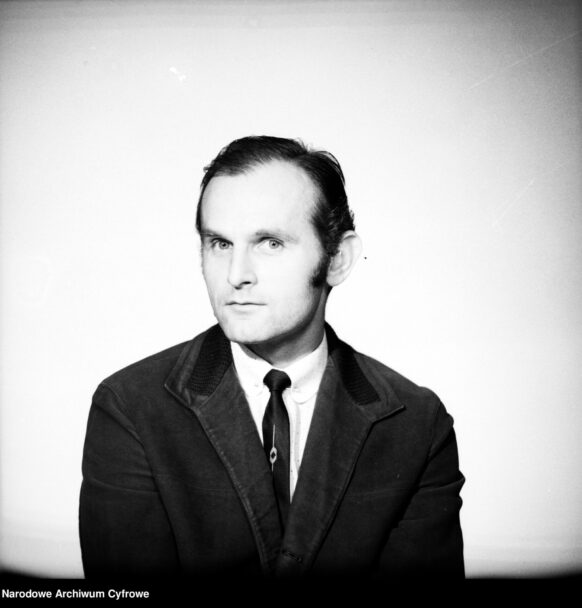Zygmunt Sidlo was born on January 22, 1933. In 1954 he completed the State Ballet School in Bytom and began working at the Silesian Opera. From 1954 to 1957 he was a dancer with the Song and Dance Ensemble of the Polish Army. He then performed on the stage of the Grand Theatre in Warsaw – from 1957 as a dancer, and from 1960 onwards as a soloist.
Sidło danced in a number of productions, including Igor Stravinsky’s The Rite of Spring (Leader of the Black Group; choreography: Alfred Rodrigues; December 11, 1965); Daphnis and Chloe (Pan; choreography: Alfred Rodrigues; October 16, 1963); Tchaikovsky’s Swan Lake (Evil Spirit; choreography: Natalia Konus; January 12, 1961) Ludwig Minkus’s Don Quixote (solo part; choreography: Aleksei Chichinadze; March 5, 1967); Ludomir Różycki’s Master Twardowski (Mephisto, Sultan, Highlander; choreography: Felix Parnell; March 5, 1959); Zbigniew Wiszniewski’s Ad Hominem (soloist; choreography: Witold Gruca; premiere: October 7, 1964); Nocturne and Tarantella (choreography: Witold Gruca), Harnasie (Groom; choreography: Eugeniusz Paplinski), together with the ballet-pantomime Mandragora (choreography: Witold Gruca); as part of the Karol Szymanowski Ballet Night, November 23-24, 1966; Sergei Prokofiev’s Romeo and Juliet (Friar Laurence; choreography: Aleksei Chichinadze; June 26, 1970).
As an assistant choreographer, he contributed to the staging of such productions (primarily ballets and operas) as Four Ballets (April 16, 1972; choreography: Joseph Lazzini; second assistant choreographer: Barbara Kasprowicz): José Berghmans’ Ecce Homo, Alexander Mosolov’s E=MC2, Béla Bartók’s The Miraculous Mandarin, Maurice Ravel’s La Valse; Giuseppe Verdi’s La Traviata (October 21, 1973; choreography: Witold Gruca, second assistant choreographer: Maria Karnkowska); Richard Wagner’s Tannhäuser (February 17, 1974; choreography: Witold Gruca); Augustyn Bloch’s Very Sleeping Beauty (premiere: September 29, 1974; choreography: Witold Gruca), Romuald Twardowski’s Sculptures of Master Peter (September 29, 1974; choreography: Teresa Kujawa); ballet night: K + S + 2P (1st part of the bill; choreography: Marta Bochenek) – Ballet Etudes (February 15, 1975; music: recordings by Krzysztof Komeda), Swinging Music by Eugeniusz Serocki, Capriccio by Krzysztof Penderecki, String Quartet by Krzysztof Penderecki, and Mane-Thekel-Fares (2nd part of the bill; choreography: Jerzy Makarowski; music: Eugeniusz Rudnik), Ferdinand Hérold’s The Wayward Daughter (April 17, 1977; choreography: Sir Frederic Ashton; second assistant choreographer: Janusz Smoliński), Let’s Dance Jazz (as part of the Rhythms and Moods ballet night; September 19, 1981; choreography: Alain Bernard; second assistant choreographer: Sylvia Rottermann).
In addition, he choreographed Alexander Glazunov’s A Dream, set to music by Claude Debussy (as part of a ballet night entitled Our Nijinsky; May 26, 1989).
He appeared in Robert Stando’s film Three Elements (premiere: 1967; role: “Fire” Dancer).
From 1970 onwards, he taught at the State Ballet School in Warsaw.
Zygmunt Sidło died on July 29, 2021 in Warsaw.
